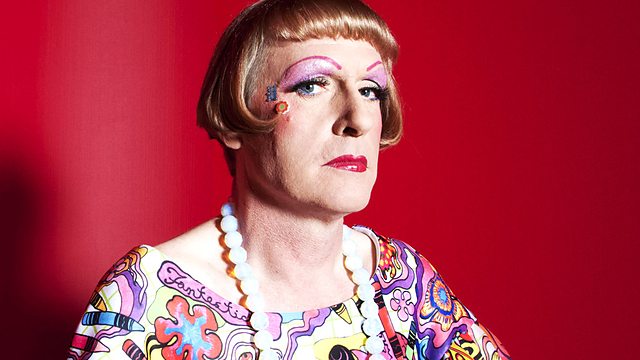Calm down, dears: the strange coughing noise that was heard across Britain at around 8.30 yesterday morning was not the last gasp of an exhausted Mother Earth, nor was it the harbinger of a country-wide Ebola outbreak. No, it was simply the sound of nation’s middle-aged, middle-class men choking on their cornflakes while listening to Grayson Perry being rude about them on the Today programme.
Perry was appearing to promote his guest edition of the New Statesman, proudly entitled the ‘Great White Male Issue’. That issue is the subject of Perry’s lead article, which tackles the Default Man – a shorthand term for the straight white middle-aged males who oppress the rest of us from office towers ‘in various phallic shapes’, their uniformly grey suits enlivened only by the ‘colourful textile phalluses hanging around their necks’.
Such a phalloscopic perspective is more deserving of pity than of outrage. The problems faced by women today are great enough without them having to stress about converting a collection of perpendicular objects into a bristling gallimaufry of members. The skyscrapers of, say, the City of London are the product of cramped city real estate, not male hegemony; to paraphrase Freud, sometimes a Gherkin is just a gherkin.
Perry’s being provocative, of course, adopting the position of playful inquisitor-naïf more usually occupied by his fellow Staggers guest-editor, Russell Brand. At the end of his Today interview he was audibly chortling at his own suggestion that those who objected to positive discrimination did so because ‘their privilege was being ripped out of their claws’. The breezily anthropological tone with which he taxonomises Default Man, with his ‘grey, western, two-piece business suit’, his ‘snobbery, emotional constipation and [his] overdeveloped sense of entitlement’, confidently anticipates the species’ decline, if not its outright extinction. Perry likens these people to the targets of Operation Yewtree, in that ‘they are among us and hide in plain sight’. Armed with his manifesto, it is implied that this problem (Default Man) can be identified, tracked down and, in a decisive but non-specified way, dealt with.
That brief flash of the pitchfork points us towards one of the main difficulties of writing, at this particular moment, about men, or women, or any permutation of the relationship between the two: that of establishing a tone that isn’t either patronising or threatening. Even a thinker as subtle as Perry can’t avoid portraying Default Man as either a pitiable throwback or a monster, while many male writers on feminism find it all too easy to divide women into sluts and shrews. Such a state of affairs leads to racy debate and more page hits, but it’s of limited rhetorical use, not to say extremely unconvivial.
Feminist activist Caroline Criado-Perez applauds a book for doing ‘what the best feminist writing does: it makes me angry’. If that’s the standard, then Jim Davidson is on a par with Germaine Greer and Mary Wollstonecraft in the feminist canon. Perry is spot-on on many things: the emotional illiteracy that makes men three-and-a-half times more likely than women to commit suicide, for example, or the prevalence of the ‘male gaze’ that seemingly yanks every television lens towards nubile breasts and buttocks. What’s needed is the admission of a greater breadth of tone, so that debate can shed light as well as giving off heat.
Philip Sidney is a feminist, albeit aware that men who self-identify as ‘feminists’ can be kind of annoying






Comments